Ella Daniel's AP Research Project
Road to Research
Beginning stages

I love film and want to learn more about its history, I thought. I had just recently bought a film camera and wanted to inquire on the different types of film: 8mm, 16mm, 35mm. My initial project aimed to research how the actual film strip affects the look of the movie. I wanted to analyze the negatives themselves, however, I could not find much research on this that is academic and needed to narrow my search and project. I still wanted to analyze film itself, so I transitioned to researching film cameras and found that Technicolor was discontinued in 1965, but they introduced the first color film camera in the 1930s. This led me to gather more questions on why it was discontinued; leading me to a question: “How did the transition from film to digital cameras affect the movie industry?”
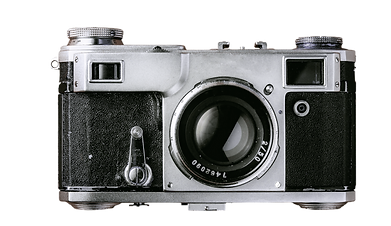
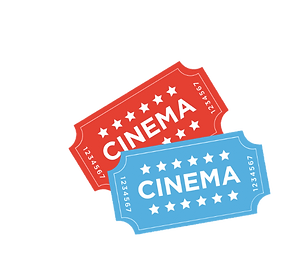

Middle stages
After advice from my peers, I realized that I needed to narrow my topic down to a specific genre of movie and a specific brand. Further, after more discussion with my advisor and peers, I received feedback suggesting to examining Steven Spielberg films over time since he has used film cameras and digital technologies. They also recommended that I examine time spent filming and how it affects the cost and its success.

Final stage: approval
"If I can't shoot on film I'll stop making movies.”
-Quentin Tarantino
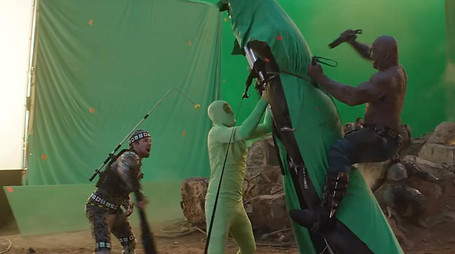
"The movie contains nearly 2,500 visual effects shots"
- - - - - - - - - - -

After more inquiry on directors I know, I found a quote from Quentin Tarantino that spiked my interest. Then, I looked for directors on the opposite spectrum of Tarantino: the Russo brothers. I was skeptical of how film costs so much with limited visual effects ability, and knowing that VFX costs much money, I wondered if Russo's use amounted to that of Tarantino's use of film. This led me to my research question.

Tarantino vs.
Russo
-The Insider
Approval of: How does visual effects in Quentin Tarantino’s movies shot on film compare to Anthony Russo’s digital VFX, and which method of movie-making is more expensive?
Blog 2
Context, Gap, Progress
“The only certainty we can count on is that the era of the 35mm is dead,” Lisa Dombroski concludes as a film-business research professor at Wesleyan University.
The history of the film-strip has been terminated with the development of digital technology as one of the key advantages of digital cinema is its flexibility and affordability.
-
As I have researched, digital cameras are smaller and lighter than their film counterparts, making them easier to use and allowing for more creative possibilities.
-
I have found that Digital post-production techniques, such as color grading and visual effects, are also more accessible and affordable than their film equivalents with its convenience and accessibility.
-
Digital films can be distributed and exhibited more easily than film prints, which must be physically transported and handled.
-
Seen in Eastman Kodak’s bankruptcy in 2012, the 35mm camera within many brands have ceased creation, taken over by digital brands such as Nikon, Canon, and Sony.
-
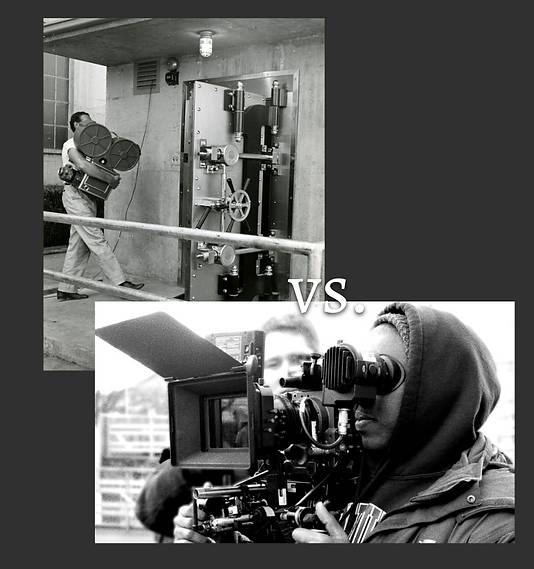
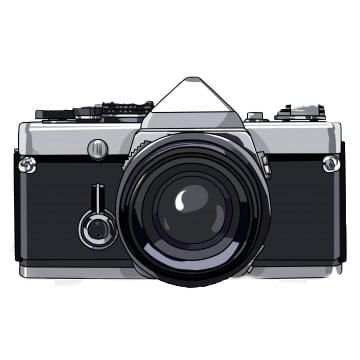
_edited.png)
However, the transition from film to digital cinema has not been without challenges. My contextual research illustrated that many filmmakers and audiences have expressed concern about the loss of the "film look," which refers to the unique aesthetic qualities of celluloid film. Digital cinema also presents new challenges in terms of preservation and archiving, as digital files are more susceptible to degradation and obsolescence than film prints. 35mm film is not “quite” dead, the Kodak brand continues to produce massive amounts of film each year. According to filmmakers, in also showing this challenge of transition, 70 percent of motion pictures are shot on film; even present day big time directors, such as Steven Spielberg, Christopher Nolan, Clint Eastwood, and J.J. Abrams prefer to shoot on 35mm film.

MY RESEARCH WILL:
settle debate in filmmaking industry of which method of filmmaking is more cost efficient in present day with large prevalence of VFX in 2023 cinema
GAP
My research has chosen to analyze Quentin Tarantino’s films over time because he only shoots on analog film with his devotion to this method in the quote: “If I can't shoot on film I'll stop making movies”. Next--to gather research on the opposite spectrum--this paper has chosen to examine the Russo brothers’ films, as they have incorporated thousands of visual effects into their digital cinema productions. This research hypothesizes that Tarantino’s films will prevail more expensive due to the historical cost of making a film on analog, even though the Russo brothers use thousands of expensive visual effects.
Currently, there is no research on how the amount of visual effects between film or digital productions affects the cost of the movie over time, my research will address the topic. The research and conclusion that will be drawn will use the scholarly claims of Dombroski and Belton, two experienced filmmakers and professors, to take a deeper look at how they exemplify truth. My research examines the cost of the Russo brother’s extreme use of visual effects in comparison to Quentin Tarantino’s all film-strip movies to determine which method truly is more expensive to settle the debate of film versus digital.

PROGRESS

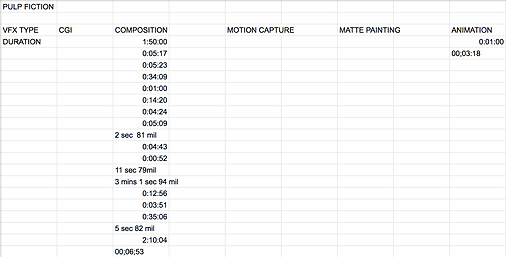
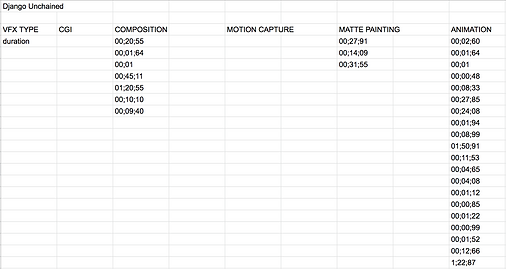
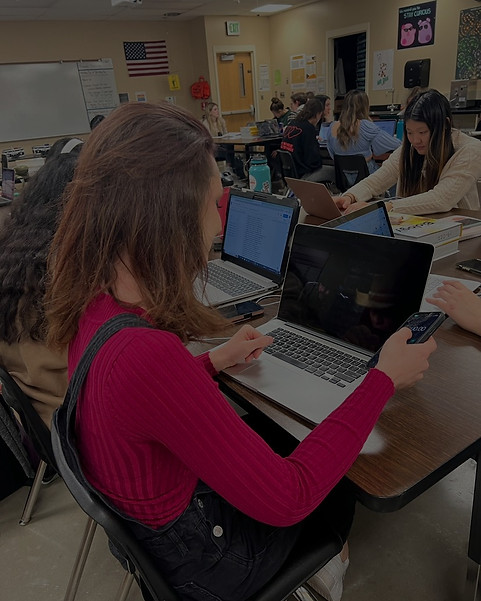
Currently, I have gathered data for most Tarantino and Russo movies. As I am approaching the end of data collection, I have found that I have not encountered many issues throughout my process. Assessing and collecting data for these movies has been relatively easy. A struggle to distinguish is special and visual effects. However, before data collection, I was able to research to understand the difference and profiecently distinguish in Tarantino's and Russo's movies.
After data collection, I will begin to review trends in the data as well as calculate the average spending to understand which method has demonstrated more cost efficient. I initally did not expect the school wifi to block websites. However, I changed my plan to using my hotspot on my phone to allow access. I encountered another change: my hotspot runs out of data. I changed my data collection to mostly at home.
Challenges & Next Steps
Results of Data Collection
My data demonstrated that Tarantino (blue) and the Russo brothers (red) had an inverse relationship between the years of 1990-2023 with their frequency of VFX. I noticed that Tarantino uses more visual effects in his two movies in 1990-2000 than he does in his movies in 2010-2023. I found this interesting because he used the most visual effects in Kill Bill (2002). However, the Russo brothers had a surge in VFX usage while Tarantino decided to use less.
In relation to my question, my data illustrated that in Modern Day cinema, it cost significantly less to shoot on film than it did for shooting on digital, answering my initial question of how the frequency of VFX impacted the cost of creating a movie with the two different methods.
My data ultimately refuted my initial hypothesis. The data I collected demonstrated that shooting on digital was the most costly and less efficent method to save money and the film industry.
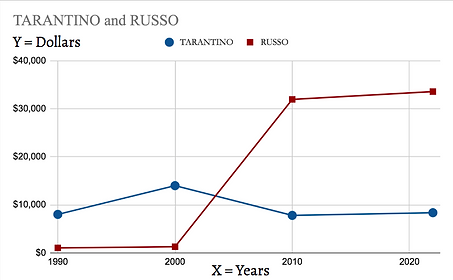
My research introduces a specific examination of the frequency and duration of certain aspects of a modern-day film to the academic conversation
Initial Inquiry and Conclusions
VFX vs. SPECIAL
MENTOR
FILM AT UNM

Further research + Limitations
After researching, I realized my data cannot encapsulate the entire film industry. There are filmmakers such as George Lucas, JJ Abrams, Steven Spielberg, and others that use a combination of film and digital. I want to further pursue this topic by examining how the intermixture of each method affects the cost of the film. When continuing this research, I would find a mentor that would help me understand and be able to more accurately distinguish visual effects. Another limitation I experienced was differentiating between special and visual effects; if I were to go back to this current research project, I would recruit a mentor to help me with understanding visual effects to a greater level--ultimately generating more accurate data.
Nonetheless, this research process has equipped me with insight for my future endeavours, as I am pursuing film and digital media arts at the University of New Mexico. UNM holds one of the largest film archives, while also holding the second largest digital production studios in America. As a filmmaker having to fund my own projects, I will lean towards using film instead of digital because of its cost efficiency due to the data that demonstrated its less expensive price. Furthermore, I am easily able to continue this research at UNM due to its easily avalible archives to students as well as its equipment. I am eager to continue this research!
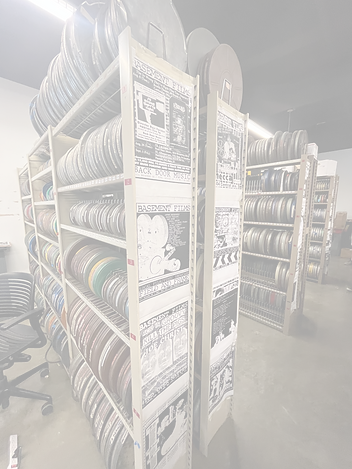
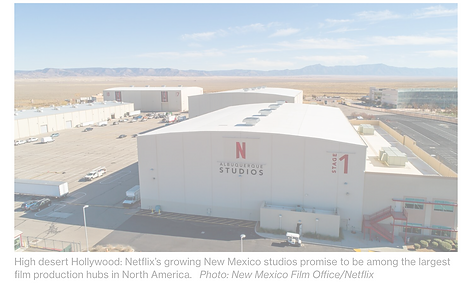
ALSO AT UNM
AT UNM
Researching my topic of film versus digital has fostered the development of many skills that I will use into my future at college and beyond. As I become a film major, this research has helped me learn which method is more cost efficient that I can apply to my own films when I attempt to fund them. Furthermore, I am engaging in classes at the UNM honors college where research papers are mostly written. Being able to derive a topic of interest, academically research, develop methodology, and analyze data collected are skills that I have learned that will carry over into my college career. From my presentation, I learned that what I am presenting is merely a conversation and a display of my hard work for others to admire. Additionally, as a film major, I will need to present ideas and research to those and need the confidence and speaking skills I gained in AP Research.
I would like to thank Ms. Dobos and my closest family for supporting me throughout my senior year especially with this research. I owe my deepest gratitude to everyone as they have helped me push through in tough times. Thank you Ms. Dobos for constant check ins and encouragement. I wouldn't have successfully completed my research and confidently presented it if it weren't for your frequent help.
Abstract
Film and digital cinema are two different mediums for shooting and displaying moving images. The “analog” film strip has been used for over a century and offers a unique aesthetic quality that filmmakers and audiences enjoy. Film captures images through a chemical process, creating a unique texture and grain that can add character and depth to the image. However, film can also be expensive and time-consuming to use, as it requires physical film strips, processing, and printing. Digital cinema, on the other hand, uses electronic sensors to capture images and stores them digitally. This can offer filmmakers greater flexibility and convenience in terms of shooting, editing, and distribution. Film has had a significant impact on society and culture throughout its history. In the beginning of cinema in the 1920s, this art was a major form of entertainment as well as propaganda for political messaging. As films became more sophisticated and complex with technology, they began to reflect and comment on the social and cultural issues of their time as movies are a snapshot of the political, social, and environmental climate. Film has also played a major role in shaping popular culture. In this study, the impact of digital technology is examined with its cost efficiency with the factors that contribute to the cost of visual effects.
click these links to access:
I am off to the University of New Mexico. Please look forward to documentaries being created that focus on issues surrounding social change!

